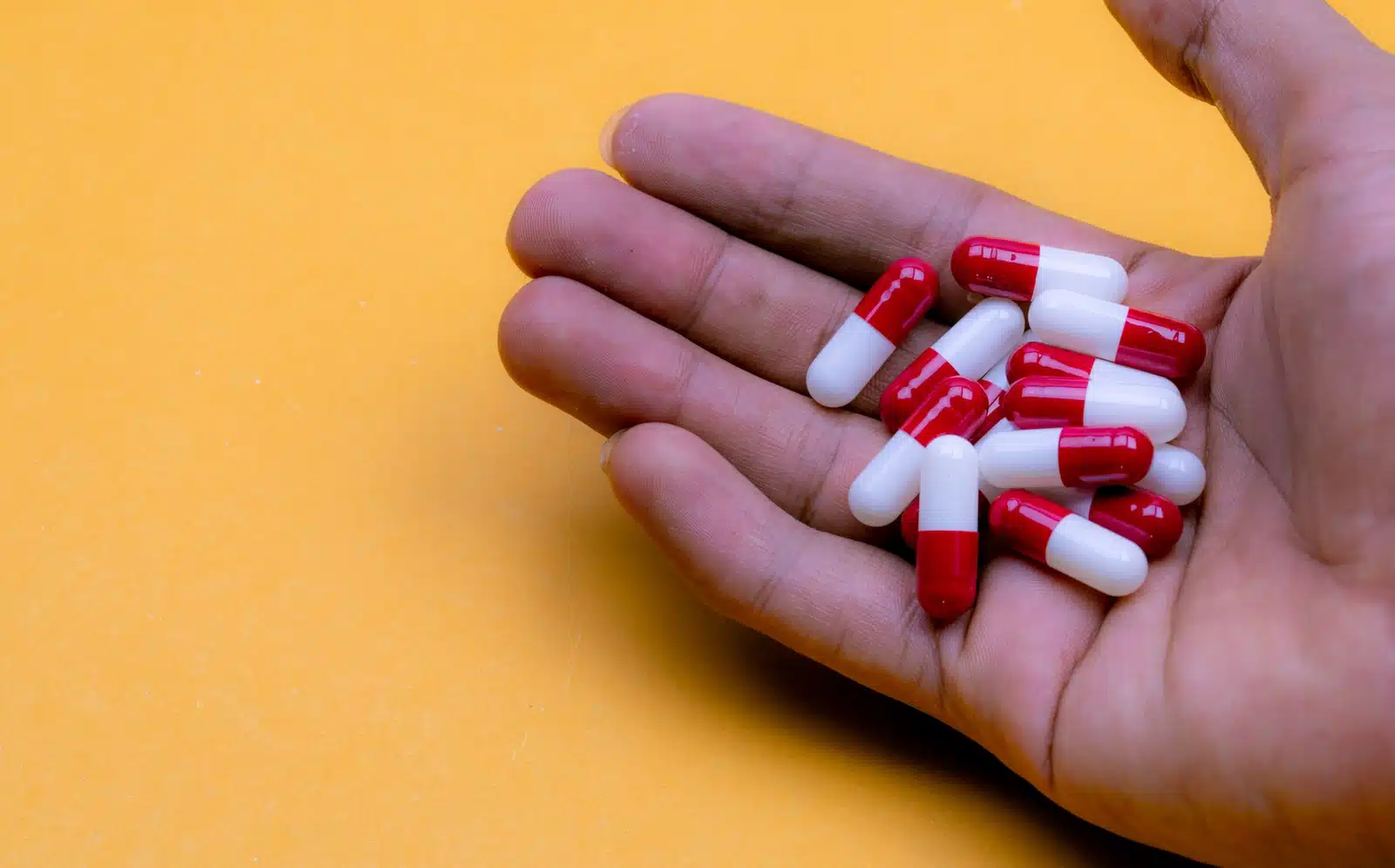Key Points
- Lyrica is a drug to control partial seizures, but has been used to treat neuropathic pain and fibromyalgia.
- Lyrica is not a narcotic and does not react with opioid receptors.
- Lyrica carries abuse potential due to the euphoria it produces.
- Although the risk of fatal overdose is lower than with opioids, combining pregabalin with heroin or high-dose codeine magnifies respiratory depression.
Lyrica, the brand name for pregabalin, is prescribed across the United States to treat nerve pain related to diabetes, shingles, spinal cord injury, and fibromyalgia. Because many patients receive it for chronic pain, some people assume it is an opioid narcotic like oxycodone or codeine. Lyrica belongs to a different medication class altogether. However, it is still regulated as a Schedule V controlled substance because large doses can produce euphoria and carry a risk for misuse.
Understanding why Lyrica is prescribed, its effects on the central nervous system, and the necessary precautions can empower patients to use the drug safely and recognize when professional support is needed.
Is Lyrica (Pregabalin) a Narcotic?
In clinical and regulatory terminology, the designation “narcotic” is specifically reserved for drugs that possess opioid properties, particularly those that bind to and activate mu-opioid receptors in the brain to produce analgesia and, at higher doses, induce euphoria or significant central nervous system depression. Lyrica (pregabalin), by contrast, operates via a different mechanism and does not engage with opioid pathways; therefore, despite sometimes being grouped informally with other controlled pain relievers, it does not fit the strict pharmacological definition of a narcotic.
What Class of Drug is Lyrica (Pregabalin)?
Despite not technically being a narcotic, the US DEA has placed pregabalin in Schedule V, the lowest federal control level, after reviewing evidence that high doses can create euphoria, altered perception, and intoxication similar to alcohol.[4] Schedule V drugs are considered to have accepted medical use as well as limited, but real, abuse potential.
Compared with Schedule II opioids such as oxycodone, pregabalin has milder withdrawal symptoms and a lower overdose risk; however, misuse can still occur, particularly among individuals with a history of substance abuse or those combining Lyrica with benzodiazepines or opioids for enhanced sedation. The Food and Drug Administration requires pharmacies to track dispensing, and prescribers must consult state prescription-monitoring programs before issuing refills.
By dampening these signals, Lyrica decreases abnormal pain transmission from damaged nerves and lowers the frequency of epileptic discharges.[2] The drug is available in immediate-release capsules, an oral solution, and an extended-release version called Lyrica CR for once-daily dosing.
Because pregabalin does not engage opioid receptors, it does not produce classic opioid effects like profound respiratory depression. However, users must still follow medical advice closely to avoid sedation, dizziness, and other side effects.
Getting a clearer understanding of what this Schedule V status means clarifies why Lyrica prescriptions include quantity limits and why abrupt dose escalation or sharing the medication is illegal. By recognizing that pregabalin is controlled—but not an opioid—patients and caregivers can better appreciate its benefits, respect its risks, and comply with regulatory safeguards designed to prevent misuse.
Why Lyrica Was Scheduled: Abuse Potential
During clinical trials, researchers observed that supratherapeutic doses of pregabalin produced feelings of euphoria and relaxation in volunteers, effects that resembled mild intoxication.[5] Post-marketing investigation later confirmed patterns of non-medical use, particularly among people already misusing opioids or benzodiazepines.
Pregabalin’s rapid absorption and short time to peak plasma concentration make it attractive for individuals seeking a quick sedative “high,” especially when combined with other central nervous system depressants. Compared with gabapentin, which remains unscheduled at the federal level, pregabalin demonstrates a higher abuse potential.
Although the risk of fatal overdose is lower than with opioids, combining pregabalin with heroin or high-dose codeine magnifies respiratory depression. These findings led the DEA to classify Lyrica as a Schedule V controlled substance, ensuring pharmacy tracking, refill limits, and heightened prescriber vigilance.[6]
Approved Medical Uses and Off-Label Prescribing
The Food and Drug Administration approves Lyrica for five main indications: diabetic peripheral neuropathy, postherpetic neuralgia following shingles, fibromyalgia, neuropathic pain associated with spinal cord injury, and adjunctive therapy for partial-onset seizures in adults.[7]
Clinicians often prescribe Lyrica capsules two or three times daily, titrating from 75 mg up to 300 mg per day as tolerated. An extended-release formulation, Lyrica CR, allows once-daily dosing for neuropathic pain. Pregabalin’s ability to modulate calcium channel activity reduces aberrant nerve firing, delivering significant pain relief within one week for most patients.[8]
Off-label, some healthcare providers use Lyrica to manage generalized anxiety disorder, particularly when first-line agents like SSRIs prove inadequate, though evidence remains mixed. Other off-label uses include restless legs syndrome and refractory migraine prophylaxis. When prescribing off-label, clinicians weigh potential benefits against side effects such as weight gain, peripheral edema, and dizziness, and they monitor for early signs of misuse.[9]
Because pregabalin can amplify sedation from opioids, benzodiazepines, or alcohol, doctors often start at the lowest effective dose, counsel patients on avoiding CNS depressants, and reassess efficacy and safety at every follow-up visit.
Common and Serious Side Effects

Frequent side effects
- Drowsiness, dizziness, and sleepiness that can impair driving or operating machinery
- Weight gain and peripheral edema that may worsen existing heart or kidney conditions
- Dry mouth, blurred vision, and mild constipation affect day-to-day comfort[10]
Serious adverse reactions
If you experience any of the following, it should be considered a medical emergency, and professional help should be sought as soon as possible.[11]
- Suicidal thoughts or mood changes that require immediate mental health evaluation
- Swelling of the face or throat, difficulty breathing, or hives
- Any serious allergic reactions with rash or itching
Other considerations
- Concurrent use with opioids, benzodiazepines, or alcohol can create dangerous sedation and a higher risk of respiratory depression
- Taking Lyrica with antihypertensives can cause dangerous drops in blood pressure
- Rare reports of arrhythmias in individuals taking high doses or mixing pregabalin with stimulants
Dependence and Withdrawal Symptoms
Even though pregabalin is classified as a Schedule V controlled substance and has one of the lower potentials for abuse, long-term or high-dose use can lead to physical dependence. Patients may notice tolerance, requiring higher doses for the same level of pain relief, or cravings between scheduled doses.
Warning signs include taking extra capsules, running out early, or using multiple doctors to obtain refills. Abrupt cessation can trigger withdrawal within 24 to 48 hours, characterized by insomnia, nausea, headache, flu-like muscle aches, heightened anxiety, and in severe cases, seizures or rebound neuropathic pain.[12]
Individuals who also misuse opioids or benzodiazepines face greater withdrawal severity and relapse risk. Gradual tapering under medical supervision is critical to minimize discomfort and prevent dangerous rebound symptoms. Loved ones should watch for mood swings, exaggerated sedation, or continued dose escalation and encourage professional evaluation if misuse is suspected.
Safe Usage Guidelines
Take Lyrica exactly as prescribed, starting with the lowest effective dose and titrating only under the direction of your healthcare provider. Swallow capsules whole and avoid crushing or chewing extended-release Lyrica CR tablets.
Do not mix pregabalin with opioids, benzodiazepines, or alcohol unless specifically cleared by a clinician, because combined central nervous system depression can slow breathing and impair cognition. Schedule routine check-ups to monitor weight, peripheral edema, blood pressure, and mood changes; promptly report new or worsening depression or suicidal thoughts. Patients with kidney disease require dose adjustments, while those who are pregnant, breastfeeding, or planning pregnancy should discuss potential fetal risks and alternative therapies.
Never stop Lyrica abruptly—work with your provider on a structured taper to prevent withdrawal symptoms and rebound pain. Storing the medication in a secure place and adhering to refill limits helps reduce diversion and keeps therapy both effective and safe.
Effective Treatment Solutions for Lyrica Misuse
If you or a loved one struggles with pregabalin dependence, professional help can make detox safer and more comfortable. Inpatient programs provide 24-hour support for individuals with co-occurring opioid or benzodiazepine use, while outpatient tracks allow stable clients to continue work or family duties during taper.
Evidence-based therapies—cognitive behavioral therapy, relapse-prevention training, and trauma-informed counseling—address underlying pain, anxiety, or mental-health triggers. After detox, clinicians collaborate with pain specialists to introduce non-addictive alternatives such as physical therapy, NSAIDs, or serotonin–norepinephrine reuptake inhibitors, ensuring long-term symptom management without pregabalin misuse.




